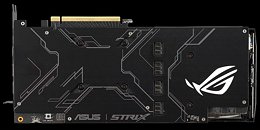
NVIDIA GeForce RTX 20-series Mobility mGPU Lineup Revealed
NVIDIA is giving finishing touches to its first GeForce RTX 20-series Mobility GPUs for notebooks, based on the "Turing" architecture, with product launches expected from Q1-2019. The company could debut the series with a high-end part first, the GeForce RTX 2080 Mobility Max-Q. The rest of the lineup includes the RTX 2070 Mobility Max-Q, RTX 2060 Ti Mobility, RTX 2060 Mobility, RTX 2050 Ti Mobility, and RTX 2050 Mobility. What's interesting about this list is that NVIDIA is limiting the Max-Q design to its top-tier RTX 2080 Mobility and RTX 2070 Mobility parts.
Max-Q is an all-encompassing laptop thermal-design methodology, which allows gaming notebook designers to come up with thinner notebooks with higher performance. One of the key aspects is special Max-Q ready variants of the GPUs, which are probably binned to run the coolest, and least voltages. With a device ID 1eab, the RTX 2080 Mobility Max-Q is based on the TU104M chip, while other SKUs could be carved from the TU106M or a chip even smaller. It's being reported that with this generation, NVIDIA is playing a more active role in helping its partners engineer their Max-Q notebooks, and helping them meet NVIDIA's strict Z-height minimums.
Max-Q is an all-encompassing laptop thermal-design methodology, which allows gaming notebook designers to come up with thinner notebooks with higher performance. One of the key aspects is special Max-Q ready variants of the GPUs, which are probably binned to run the coolest, and least voltages. With a device ID 1eab, the RTX 2080 Mobility Max-Q is based on the TU104M chip, while other SKUs could be carved from the TU106M or a chip even smaller. It's being reported that with this generation, NVIDIA is playing a more active role in helping its partners engineer their Max-Q notebooks, and helping them meet NVIDIA's strict Z-height minimums.







